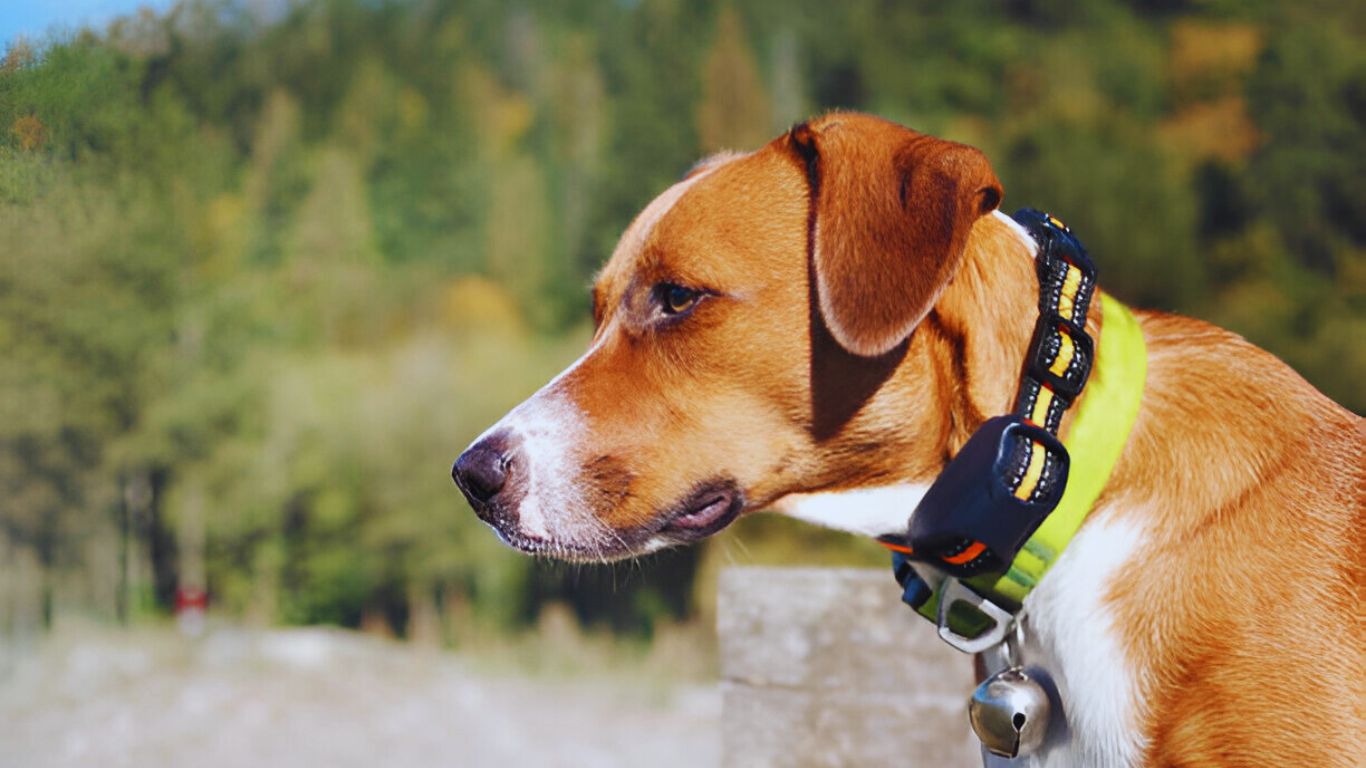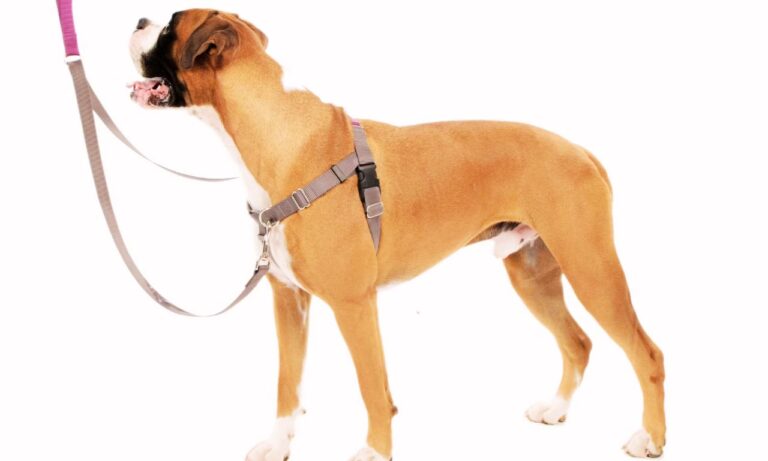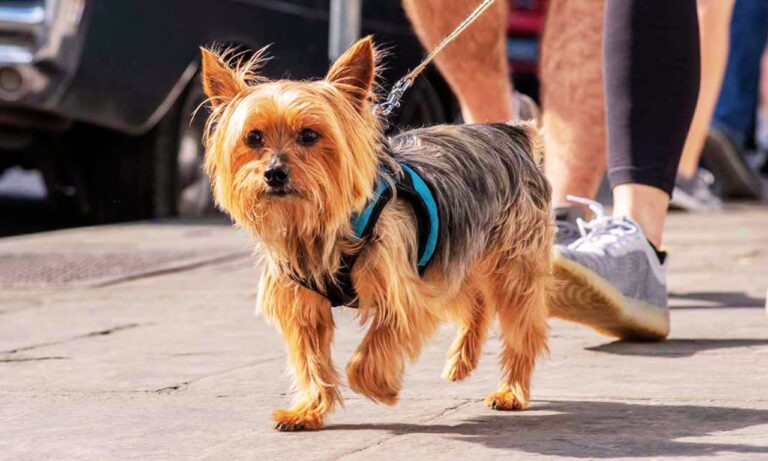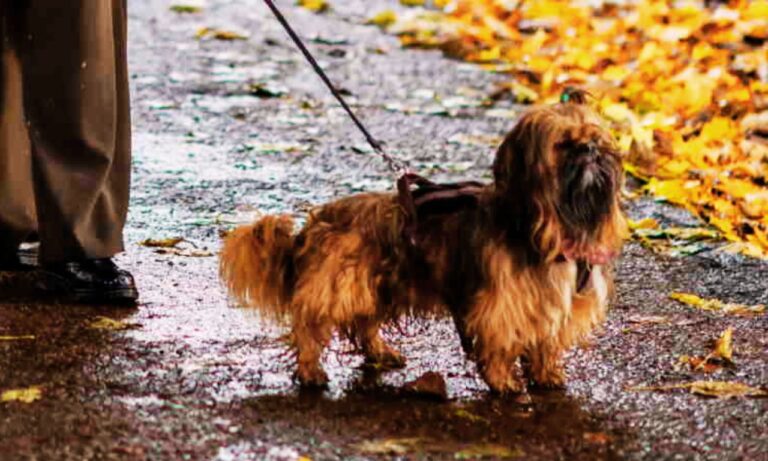Walking with your pet is among the most enjoyable activities for both you and your dog. It is a great way to exercise your dog, as well as provide mental stimulation and the chance to bond. However, making sure your dog’s security on walks starts with a correctly fit collar or harness. In this complete guide, we’ll go over the different types of collars, as well as how to place them properly and where should a collar sit on a dog’s neck?
If you’re considering an e-collar for your dog, it’s important to know whether e-collars are waterproof and how they perform in various weather conditions to ensure your dog’s safety during outdoor activities.
Blog Highlights
ToggleWhy Does the Right Collar Fit Matters?
The position of the collar on dogs’ necks is important for many reasons. A correctly fitted collar not only aids in controlling the dog’s behavior on walks but also guarantees the dog’s security and comfort.
An improperly placed dog’s collar could result in a myriad of problems, including skin irritation and the possibility of the dog falling off the collar. Choosing the right e-collar for your large dog can be challenging. Explore the best e-collars for large dogs that offer durability, effectiveness, and comfort for larger breeds.
Dog’s Neck Anatomy
The neck of a dog is a delicate area with vital structures such as the trachea, the esophagus, and the Jugular veins located near the surface. A collar that is placed far too close to the neck, and shoulders, could pressure these important structures, causing discomfort and even injury.
The best position to wear a collar is high at the top of your neck, right below the ears. This position allows for better control of your dog without putting too much tension on your dog’s throat. Let’s look at the various kinds of collars and the perfect way to use them. Put it on the neck of your dog.
Looking for an effective solution to manage your small dog’s barking? Check out this comprehensive guide on the best dog bark collar for small dogs, designed to help reduce excessive noise while ensuring your pet’s comfort and safety.
Types of Dog Collars and Their Proper Placement
The correct positioning of the various types of dog collars is crucial to ensuring your pet’s safety, comfort, and efficient training. Each type of collar, from martingale to flat, must be placed in a specific way on your dog’s neck to ensure the best payoff.
1. Flat Collar
Flat collars tend to be the most commonly used form of dog collar. They’re usually constructed of leather or fabric and secured with either a snap or buckle. These collars are perfect for carrying identification tags and attaching a dog leash in everyday life.

Positioning: The collar should rest high on your pet’s neck. It should be snug but not squeaky. It should be possible to put one or two fingers across the collar to the neck of your dog. In the event that your collar’s not snug enough, it could cause the dog to escape, and if it’s excessively tight, the dog may result in discomfort or a restriction of breathing. Make sure to check the fit frequently, particularly for puppies in the growing stage, to ensure that it is safe and comfortable.
2. Slip Leash Collar
The slip-leash is a combination of a collar and leash in one unit. It is typically used for training and in other situations where an efficient and simple method of guiding the dog is required. Once pulled, the collar is slackened around the dog’s neck, allowing the dog to be controlled without the requirement for a second collar.

Positioning: The slip lead must be placed on the dog’s neck close to the ears but not above them. This will ensure that the pressure used during corrections doesn’t harm the dog’s throat. Make sure to use the leather stopper to keep the collar from being loose enough, as this can let the dog slide off the collar.
3. Martingale Collar
Martingale collars are specifically designed to accommodate dogs who can slide out of flat collars. They have a loop that tightens as the dog pulls it, preventing escape and avoiding the choking risk that comes with choke chains.
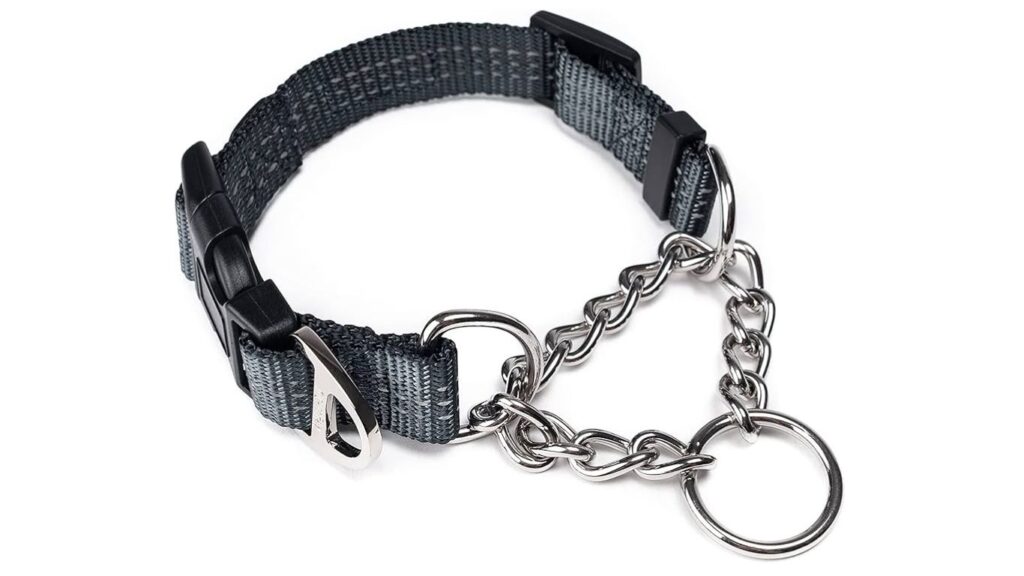
Positioning: Martingale collars should rest prominently on the neck like an ordinary collar. The collar is to be adjusted so you can ensure that each time your dog tugs it, the collar is tightened sufficiently to stop escape, but not to the extent that it can cause the dog to choke. If properly fitted, the collar must be comfortable and loose even when the dog isn’t pulling.
4. Pinch Collar (Prong Collar)
Pinch collars (also called prong collars) are designed to train dogs with behavior issues, specifically powerful pullers. These collars comprise steel prongs that grip the neck of the dog when you pull on them.

Positioning: A pinch collar must be properly fitted and rest high on the dog’s neck right behind its ears. It is essential that the collar does not feel too loose. A loose fit could cause the prongs to turn and squeeze the skin, causing irritation or even injury. If used properly, the slightest tug could be suitable for making contact with the dog. However, they should only be used with the supervision and guidance of a competent trainer.
5. Choke Chain
Choke chains are metal chains that are secured around the collar when it is pulled. They’re designed to keep dogs from backing away from the collar; however, if they’re not used correctly, they could also cause the dog to choke.
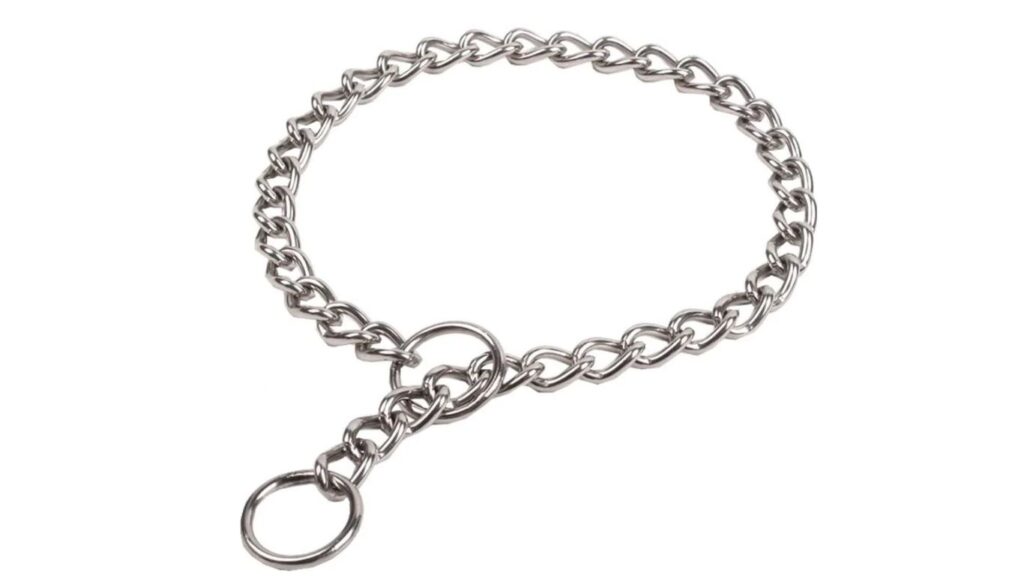
Positioning: The choke chain should be placed on the neck of your dog, creating a “P” shape when viewed from the front when you apply it to the dog. This design lets the collar move rapidly when the leash is loose. The collar must be snug enough to stop the dog from falling out yet loose enough that it doesn’t exert pressure continuously on the neck.
6. Breakaway Collar
The breakaway collars have been designed to let go when the collar is caught by something, thus decreasing the chance of strangulation. They are perfect for dogs who have to be left alone for a long time, who spend much time unsupervised, or who are prone to getting into tight areas.

Positioning: Like flat collars, breakaway collars must be placed at the top of your neck and snug without being too tight. The collar should be able to break when pressure is applied to assure the dog’s safety in case it is caught on something. When walking, the leash should be tied to both rings to stop the collar from separating in error.
Wondering whether barking collars are a reliable training tool for your dog? Learn more about how barking collars are effective, and what factors contribute to their success in curbing unwanted barking behavior.
How to Ensure a Proper Fit?
So, after knowing where should a collar sit on a dog’s neck, you should know some key points. Making sure that your dog’s collar is properly fitted is essential for its safety and comfort. Always checking the fit, looking for signs of irritation, and altering the collar is necessary to prevent injuries and ensure the dog’s safety during walks.
1. Regularly Check the Fit
It is essential to check the size of your dog’s collar regularly, especially for growing puppies. As growing dogs get bigger, their collars may get too tight, which can lead to discomfort or even injuries. Make sure to change or adjust your collar regularly to ensure it fits correctly.
2. Watch for Signs of Discomfort
Be aware of any indications of discomfort, including scratching the collar, swelling, or loss of hair on the neck. This could be a sign that the collar isn’t snug or that the fabric is irritating your dog’s skin. In these instances, alter the collar or consider changing to a different type of collar.
3. Consider Your Dog’s Activities
The kind of collar you choose and its fit should be in line with your dog’s routine. For example, if your dog often swims, an abrasion-proof collar may be the desirable option. If your pet is a powerful drawer, a martingale collar or pinch collar could impart greater control without compromising security.
Safety Tips for Using Dog Collars
To ensure your dog’s safety, it is vital to follow essential safety guidelines for collars together. This includes choosing the correct kind of collar, making sure it’s an appropriate fit, regularly checking to see if there is wear or tear, and using breakaway collars as needed.
1. Use Breakaway Collars for Unsupervised Dogs
If your dog has to be left alone, especially in the open, consider a breakaway collar to minimize the chance of strangulation. These collars are made to disintegrate if they become stuck on something, possibly saving your dog’s life.
2. Remove Collars When Crating
While cradling your dog, it is advised to take off the collar to keep it from getting stuck on the crate. This could cause being choked. If you choose to wear the collar, ensure it is loose enough to not cause tension around the neck.
3. Regularly Inspect the Collar
Check your dog’s collar frequently for wear and tear. A damaged collar can allow your pet to get away. If your collar is showing signs of fraying, tears, or sagging, Replace it as soon as you notice signs of weakness.
Wrapping Up:
The right collar is vital to your dog’s safety, comfort, and efficient training. No matter what you pick, flat collars, martingale, slip lead, or a pinch collar, the most important thing is to ensure that it is placed correctly on the neck of your dog and is properly fitted. Always observe your dog’s response to the collar and make adjustments whenever needed.
If you select the correct collar for your dog and put it on properly, you will be able to enjoy pleasant and safe walking with the dog, enhancing the relationship that you share with your pet. Hope so, now you know where should a collar sit on a dog’s neck? If your dog’s bark collar isn’t delivering the results you expected, discover the possible reasons why your dog’s bark collar doesn’t work and how you can troubleshoot and improve its performance.

